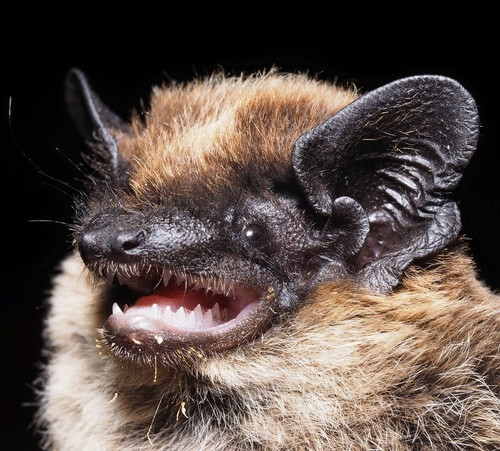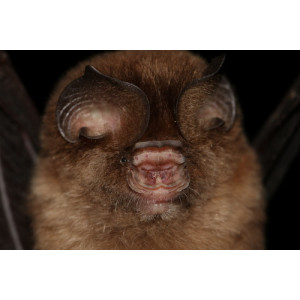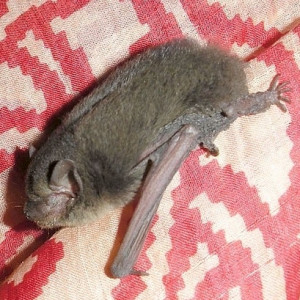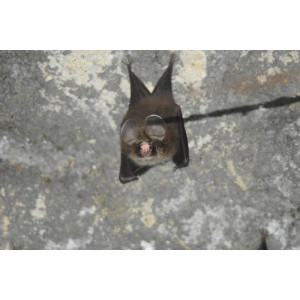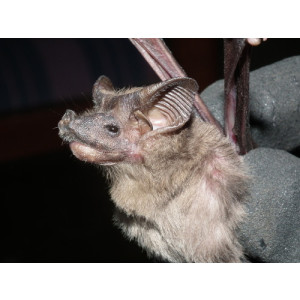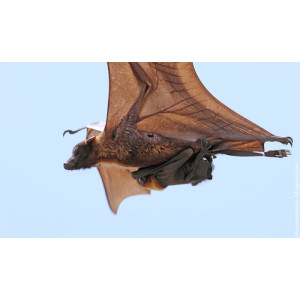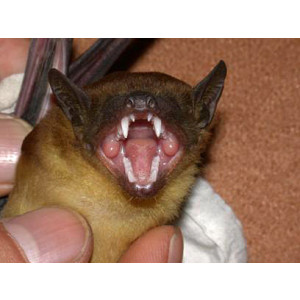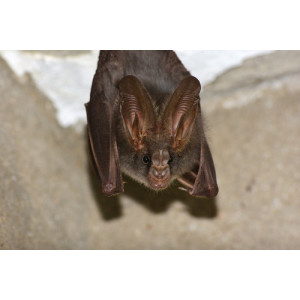Savi’s Pipistrelle Did you see this animal?
Scientific Name : Pipistrellus savii
Family : Vespertilionidae
Order : Chiroptera
Class : Mammalia
Phylum : Chordata
Habitat : Forest, Shrubland, Grassland, Wetlands (inland), Rocky areas (eg. inland cliffs, mountain peaks), Desert
Description : Savi's pipistrelle is a relatively small bat, weighing only 3-8 grams with a wingspan of approximately 20-25 cm. Its fur is brown to grey-brown in color, with a lighter underside. It has large ears and a long, narrow snout. Its wings are relatively short and broad, allowing it to fly through dense vegetation with agility.
This species is known to roost in a variety of locations, including trees, buildings, caves, and rock crevices. They have also been known to use artificial roosts, such as bat boxes, which are designed to provide suitable roosting habitat for bats.
Savi's pipistrelle is a migratory species, with some populations traveling long distances between breeding and wintering grounds. In some parts of its range, it is known to hibernate during the winter months. During hibernation, the bat reduces its metabolic rate and lowers its body temperature, conserving energy to survive the cold winter months
These bats are active at night, feeding primarily on insects such as mosquitoes, moths, and beetles. They use echolocation to locate prey and navigate their surroundings. Savi's pipistrelles are capable of emitting echolocation calls at high frequencies, which can reach up to 120 kHz.
Savi's pipistrelle is known for its distinctive social behavior. They form stable social groups, with females and males roosting together year-round. The females give birth to one or two offspring per year. Young bats are weaned after about three weeks and become independent within a few months.
Like many other bat species, Savi's pipistrelle faces a range of threats, including habitat loss and degradation, pesticide use, and disturbance of roost sites. Additionally, wind turbines pose a significant threat to this species, as they are known to collide with the rotating blades. Conservation efforts are underway to protect this species, including habitat conservation, research, and public education.
This species is known to roost in a variety of locations, including trees, buildings, caves, and rock crevices. They have also been known to use artificial roosts, such as bat boxes, which are designed to provide suitable roosting habitat for bats.
Savi's pipistrelle is a migratory species, with some populations traveling long distances between breeding and wintering grounds. In some parts of its range, it is known to hibernate during the winter months. During hibernation, the bat reduces its metabolic rate and lowers its body temperature, conserving energy to survive the cold winter months
These bats are active at night, feeding primarily on insects such as mosquitoes, moths, and beetles. They use echolocation to locate prey and navigate their surroundings. Savi's pipistrelles are capable of emitting echolocation calls at high frequencies, which can reach up to 120 kHz.
Savi's pipistrelle is known for its distinctive social behavior. They form stable social groups, with females and males roosting together year-round. The females give birth to one or two offspring per year. Young bats are weaned after about three weeks and become independent within a few months.
Like many other bat species, Savi's pipistrelle faces a range of threats, including habitat loss and degradation, pesticide use, and disturbance of roost sites. Additionally, wind turbines pose a significant threat to this species, as they are known to collide with the rotating blades. Conservation efforts are underway to protect this species, including habitat conservation, research, and public education.
References:
description written by: Asad U. Tanvir, Department of Zoology, Jagannath University, Dhaka; reviewed by: Muntasir Akash, Department of Zoology, University of Dhaka; Taxonomic Checklist: Red List of Bangladesh Volume 2: Mammals, 2015, IUCN; information sources: Wikipedia , iucnredlist.org; photo credit: Podmejc(www.inaturalist.org/people/Podmejc), photo copyright: iNaturalist. For more information please contact with us.
description written by: Asad U. Tanvir, Department of Zoology, Jagannath University, Dhaka; reviewed by: Muntasir Akash, Department of Zoology, University of Dhaka; Taxonomic Checklist: Red List of Bangladesh Volume 2: Mammals, 2015, IUCN; information sources: Wikipedia , iucnredlist.org; photo credit: Podmejc(www.inaturalist.org/people/Podmejc), photo copyright: iNaturalist. For more information please contact with us.
